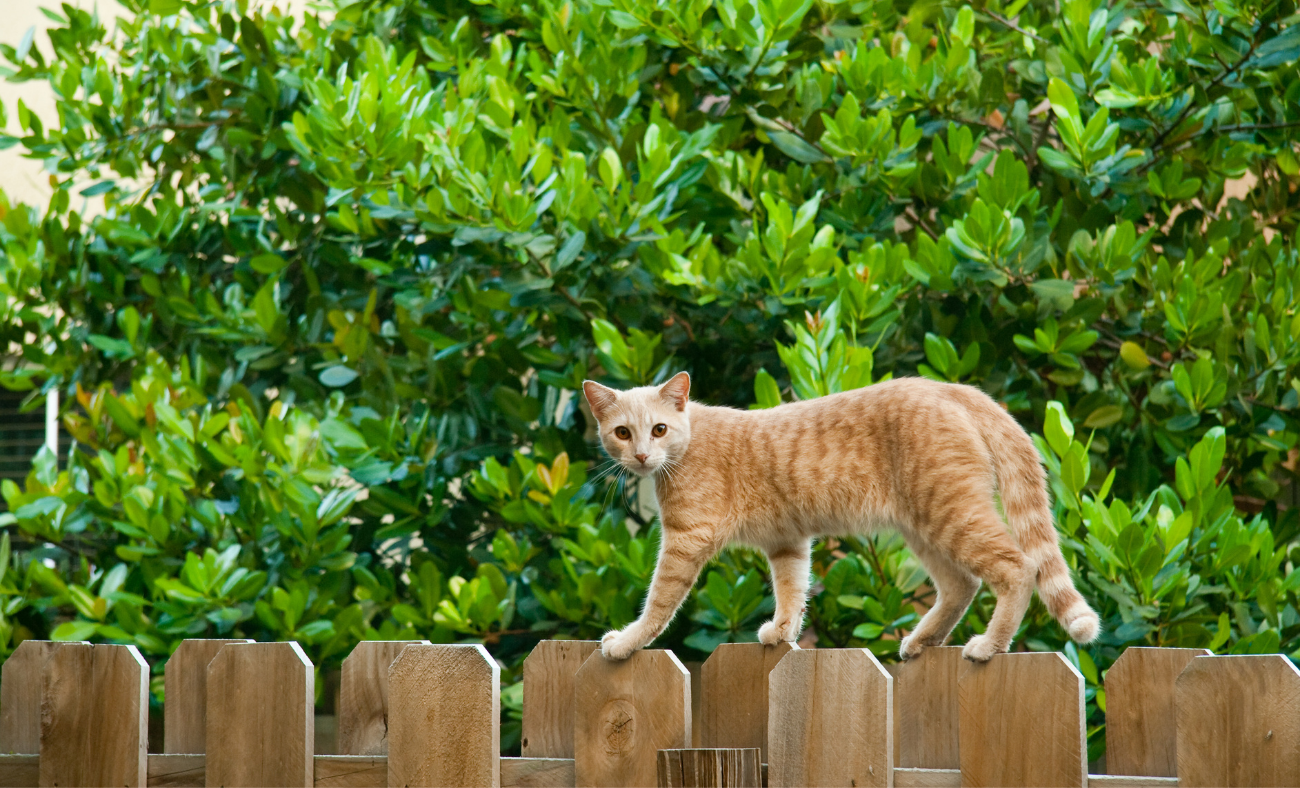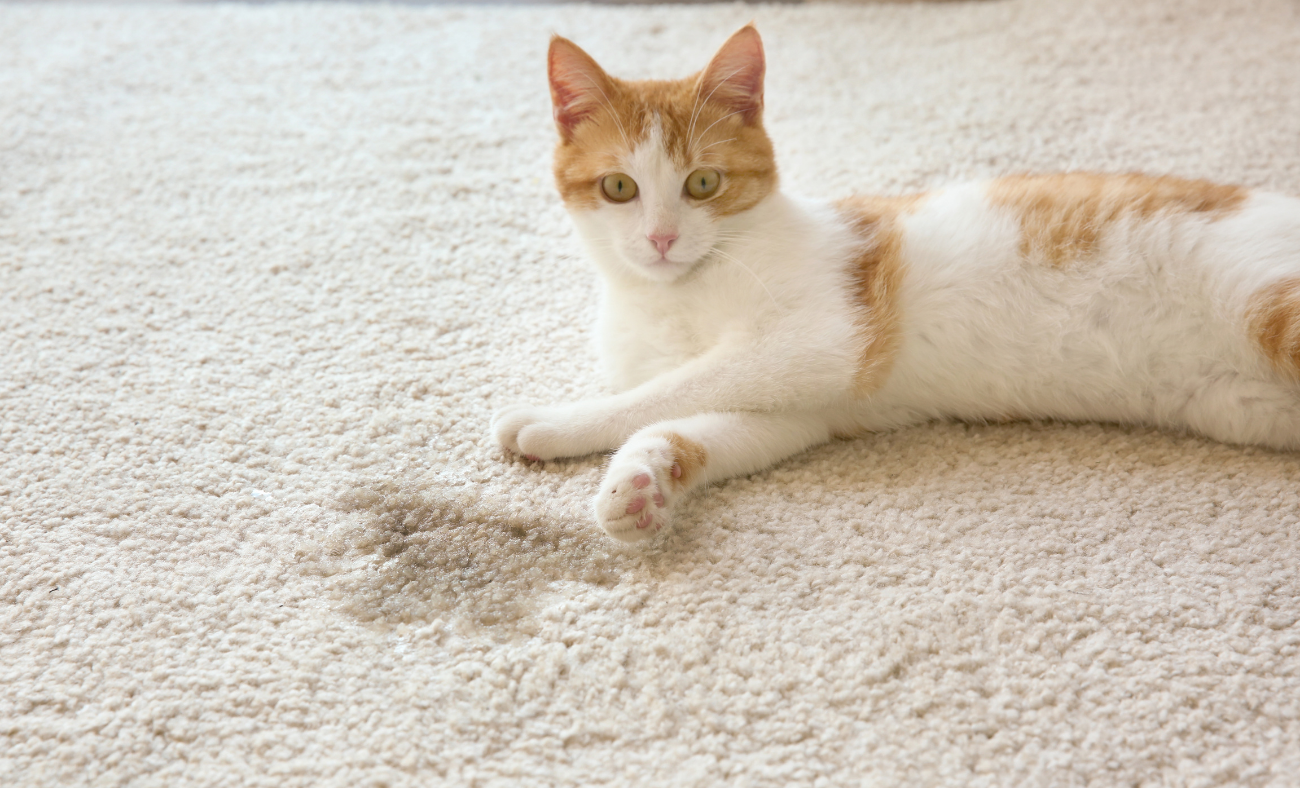When did you last actually see your cat?
Not just a glimpse of them slinking under furniture. Not the brief sighting as they dart from one hiding spot to another. When did you last see them relaxed, present, and engaged in your shared living space?
If you’re struggling to answer that question, you’re not alone.
One of the most heartbreaking transformations in feline behavior is watching a social, engaged cat gradually disappear from family life. They’re still in the house. They’re still eating, drinking, using the litter box. But they’ve essentially become invisible.
This isn’t normal aging. This isn’t cats “becoming more independent.” This is often one of the clearest forms of stress communication cats possess – and one of the most overlooked cat anxiety symptoms.
Through my studies in feline anxiety, I’ve learned that withdrawal represents a sophisticated survival strategy. When cats feel overwhelmed by their environment, removing themselves provides immediate relief while avoiding direct confrontation with stress triggers. Understanding cat anxiety helps explain why some cats choose complete social avoidance over other stress responses.
The problem? We often miss it entirely.
When Presence Becomes Absence
Here’s what makes cat withdrawal so insidious.
It happens gradually. So gradually that families often don’t realize their cat has essentially moved out emotionally until someone asks the question: “Where’s Whiskers?”
Picture this scenario: Your cat used to greet you at the door. They’d curl up on the couch during family movie nights. They’d supervise kitchen activities from their favorite perch. Now? You realize you haven’t seen them do any of these things in weeks.
This isn’t personality change. This is a sign of cat stress and anxiety that signals environmental overwhelm.
Unlike dogs, who typically make their distress obvious through changed energy levels and social engagement, cat anxiety can manifest as complete withdrawal such that families adapt to their absence without recognizing it as a cry for help.
The withdrawal often feels normal because it reduces household disruption. No demanding meows. No requests for attention. No “getting in the way” during daily activities. It’s easy to mistake this absence for peaceful coexistence.
But peaceful cats don’t hide. Secure cats choose their social engagement based on preference, not anxiety.
The Biology of Social Withdrawal
Understanding why cats choose withdrawal over other stress responses reveals the sophisticated anxiety management system at work. For cats, removing themselves from stressful environments provides immediate stress relief while conserving energy for essential survival activities.
Withdrawal activates cats’ natural energy conservation mode. When environmental demands feel overwhelming, cats instinctively reduce unnecessary activities – including social interaction – to manage their stress load.
This isn’t antisocial behavior. It’s neurobiological self-preservation.
Cats experiencing chronic stress often develop what I call “emotional invisibility.” They remain physically present but become psychologically absent from family life. Their nervous systems stay in energy-saving mode that prioritizes basic survival over social engagement.
The social aspects of withdrawal become particularly complex because cats are simultaneously seeking connection and avoiding vulnerability. They want to remain near their families but can’t tolerate the stimulation levels required for active social participation. This anxious cat behavior often confuses families who interpret withdrawal as rejection rather than stress communication.
Recognizing the Gradual Disappearance Process
Most families miss cat withdrawal because it develops incrementally. Today, your cat skips their usual morning greeting. Next week, they stop joining family movie nights. A month later, you realize they haven’t sat with anyone in ages.
Early withdrawal often appears as preference changes in family interaction patterns. Cats might begin choosing locations where they can observe family activity without being directly involved. They position themselves on the periphery of rooms rather than in central areas where interaction is more likely.
Watch for timing changes. Cats experiencing stress might begin avoiding peak family activity periods. They appear only during quiet times when household energy levels are lower and interaction demands are minimal.
Response patterns provide important early warnings for recognizing cat anxiety. Cats might become less responsive to their names. Less interested in usual interaction invitations. Less engaged with family routines that previously generated enthusiasm and participation.
The duration and location of hiding shifts significantly as withdrawal progresses. What begins as occasional retreats to favorite resting spots gradually evolves into extended periods in increasingly secluded locations that family members rarely access. This progression represents classic cat hiding behavior that indicates escalating environmental stress.
These aren’t random changes. They’re systematic adaptations to environmental stress. What’s more, they always follow predictable patterns once you understand what to look for.
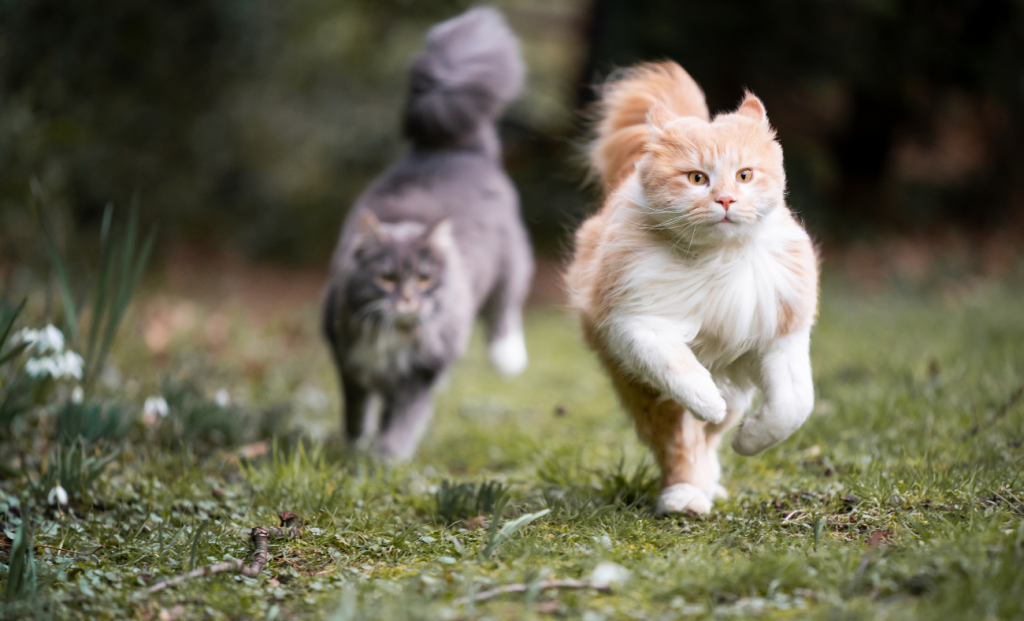
Environmental Factors That Trigger Social Retreat
Understanding environmental factors that contribute to cat withdrawal reveals how many household changes can trigger signs of stressed cat behavior and social avoidance.
Household activity levels affect cats more than most families realize. Increased schedules, home renovations, frequent visitors, or changes in household routines can create enough unpredictability to make cats feel safer avoiding social areas entirely.
The noise factor plays a crucial role. Air conditioning units, appliances, traffic sounds, or construction noise can create ongoing low-level stress that accumulates until cats need complete environmental retreat for emotional regulation.
Multi-pet household dynamics create significant social stress for cats who struggle with resource competition, territorial disputes, or personality conflicts with other household animals. Even when competition isn’t obvious to human observers, cats may feel pressure around social interaction that requires stress management through withdrawal.
Family stress affects cats’ social comfort more than most people realize. Cats are remarkably sensitive to household emotional energy. They often respond to family tension or schedule disruptions with increased self-protective behaviors, including social avoidance. Some cats may even develop cat anxiety and aggression if withdrawal doesn’t provide sufficient stress relief.
Environmental changes that alter cats’ territorial security can trigger withdrawal even when the changes seem minor. Furniture rearrangement, new household items, different cleaning products, or lighting changes can disrupt cats’ environmental confidence enough to trigger social avoidance.
The Psychology of Safety vs. Social Engagement
Learning about cats’ need for environmental security helped me understand why social withdrawal becomes an appealing stress response. Social engagement requires emotional vulnerability that cats can only maintain when they feel confident in their environmental safety.
Cats experiencing territorial insecurity often withdraw because social interaction demands attention and focus. This compromises their ability to monitor for potential threats. When cats feel their environment has become unpredictable, maintaining constant vigilance becomes more important than social engagement and relationship maintenance.
The security aspects of social interaction reveal why withdrawal location choices provide important information about cats’ specific needs and stress triggers. Cats choosing high, enclosed hiding spots often respond to different stress factors than cats hiding in ground-level, accessible locations.
Understanding how to calm a stressed cat often requires addressing fundamental safety needs rather than simply encouraging interaction through treats or play invitations that might increase pressure around social performance.
Hidden Costs of Social Isolation
Cat withdrawal creates secondary problems that compound the original stress issues. When cats remove themselves from family life, they lose opportunities for positive social interaction that naturally reduces anxiety and builds environmental confidence.
Social isolation can worsen existing anxiety by reducing cats’ exposure to normal household activities that help them develop stress resilience. Cats who spend extended time hiding often become increasingly sensitive to environmental stimuli that previously felt manageable.
The physical aspects of prolonged hiding affect cats’ overall health and well-being. Limited movement, reduced environmental stimulation, and decreased social interaction can contribute to muscle weakness, digestive issues, and immune system suppression.
Family relationships suffer when cats withdraw completely. The emotional connection between cats and their families requires regular interaction to maintain. Extended withdrawal can create relationship distance that becomes difficult to rebuild even after environmental stressors are addressed.
Different Types of Withdrawal Patterns
Understanding different withdrawal patterns helps identify specific anxiety triggers and appropriate intervention strategies for individual cats experiencing social avoidance.
Complete invisibility withdrawal involves cats who essentially disappear from family life entirely. Gone. These cats maintain basic life functions but avoid all social interaction and family area access except when absolutely necessary.
Selective social withdrawal involves cats who maintain some family interaction but avoid specific activities, people, or circumstances that trigger their anxiety responses. These cats might engage during quiet periods. But retreat during household activity.
Proximity withdrawal involves cats who remain physically near family areas but maintain emotional distance. They’re there but not there. They position themselves where they can observe family activity without participating or being approached for interaction.
Temporal withdrawal involves cats who adjust their activity schedules. They avoid family interaction during specific times or circumstances that feel overwhelming or unpredictable.
Each pattern tells a different story. Each pattern provides different information about underlying stress triggers and environmental factors requiring attention.
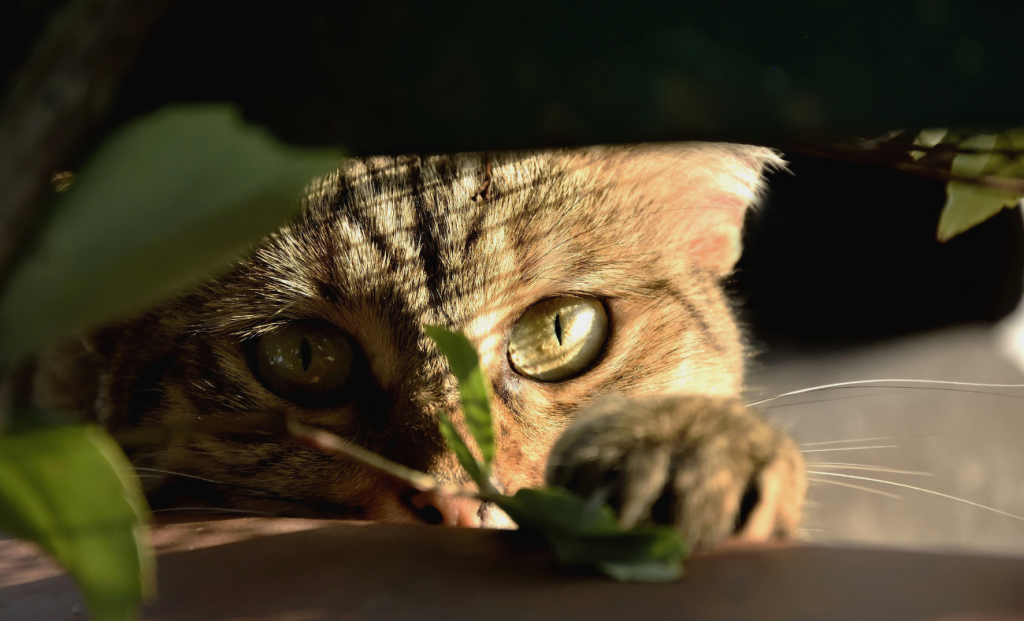
Creating Environments That Encourage Natural Re-engagement
Here’s the truth about withdrawal recovery.
You can’t force it. You can’t bribe it with treats. You can’t coax a terrified cat back into family life through sheer determination.
But you can create the conditions where re-engagement feels safe again.
Successful withdrawal intervention requires environmental modifications that address cats’ fundamental security needs. Not forcing social interaction. Not creating more pressure around family engagement. Just making the world feel safer.
Multiple sanctuary options throughout family areas provide cats with security-enhancing choices. This allows for social observation without requiring full engagement. Your cat can choose their comfort level. They can control their interaction intensity. They can maintain family area access without feeling trapped.
Environmental enrichment that builds confidence helps cats gradually expand their comfort zones. Vertical spaces give them elevated security. Hiding options provide retreat opportunities. Escape routes create psychological safety nets.
These modifications support voluntary social engagement based on cats’ comfort levels rather than family expectations.
For some cats, cat anxiety natural remedies like environmental pheromones can also support this confidence-building process.
Understanding individual personality factors helps create customized re-engagement strategies. Some cats need additional privacy before social interaction feels safe. Others require specific family interaction modifications that reduce pressure around social performance.
Patience becomes essential. Rebuilding social confidence requires time and systematic optimization of their environment. Not direct encouragement that might create additional stress around interaction expectations.
The Role of Family Dynamics in Withdrawal Recovery
Family behavior significantly affects cats’ willingness to re-engage socially after periods of withdrawal. What you do matters. How you respond matters. Your energy affects their recovery.
Understanding how human interactions influence cats’ social confidence helps create environments that support natural re-engagement.
Pressure around social interaction often backfires with withdrawn cats. Those well-meaning attempts to coax, encourage, or force interaction? They typically increase anxiety around social engagement rather than building confidence in family relationships.
Think about it from your cat’s perspective. They’ve retreated because the world feels overwhelming. Now you’re asking them to engage when they’ve clearly communicated they can’t handle it.
Creating positive associations with family areas requires patience and indirect approach strategies. Provide pleasant experiences – like feeding, treats, or play – in family spaces. This helps cats redevelop positive associations with social areas without direct interaction pressure.
Family stress management affects cats’ social comfort significantly. Cats often withdraw further when household emotional energy feels unpredictable or charged with tension.
Consistent, predictable family routines help withdrawn cats gradually rebuild confidence in household social patterns. When family activities become predictable, cats can begin planning their social engagement. Instead of avoiding all family interaction for safety.
Monitoring Progress Without Pressure
Successful withdrawal recovery requires careful monitoring. But here’s the key: you’re tracking genuine improvement. Not forcing temporary appearances that might not indicate lasting social confidence changes.
Progress often appears in small increments. Tiny steps. Baby victories. These require patience and observation rather than dramatic social re-engagement that might indicate forced interaction. What your cat needs is genuine comfort improvement.
Watch for physical positioning changes. Cats recovering from withdrawal gradually begin choosing locations closer to family activity. They spend time in doorways first. Transition areas. Before returning to central family spaces. But don’t rush them, leave them to re-engage in their own time.
The timing of appearances offers valuable recovery information. Cats experiencing reduced withdrawal stress typically begin appearing during lower-intensity family periods. Quiet mornings. Peaceful evenings. Before gradually increasing their visibility during more active household times.
Body language during family proximity indicates developing comfort levels more accurately than simple presence or absence measurements.
Look for increasingly relaxed postures. More direct eye contact. Less vigilant behavior during family proximity. These signs matter more than whether they’re sitting close to you.
Quality matters more than quantity during recovery.
Integration with Comprehensive Stress Management
Cat withdrawal often indicates bigger problems. Broader anxiety issues requiring coordinated intervention strategies. Not just isolated social encouragement that doesn’t address underlying environmental stressors.
Withdrawal frequently correlates with other cat stress symptoms. Appetite changes. Litter box anxiety. Sleep pattern disruption. A comprehensive assessment approach helps identify anxiety severity and guides intervention intensity decisions.
Understanding withdrawal as part of broader stress response systems helps develop more effective treatment strategies. These address underlying environmental insecurity. Not just encouraging social interaction through temporary incentives that don’t create lasting confidence.
Environmental modifications that support overall stress reduction often improve social engagement naturally. When cats feel more secure in their environment generally, withdrawal typically decreases and environmental confidence improves.
Professional Support for Severe Withdrawal Cases
Some cats need more than environmental changes. They need professional intervention.
When does withdrawal cross the line into crisis territory? When cats completely vanish from family life. When they refuse to eat anywhere near social areas. When environmental modifications don’t bring them back after weeks of patient implementation.
These cats may benefit from veterinary evaluation. Anti-anxiety medication can provide crucial support during environmental intervention. It’s not giving up — it’s giving your cat the neurochemical stability they need to benefit from your systematic changes.
Behavioral consultation offers specialized strategies. Professional expertise becomes essential for withdrawal cases indicating underlying anxiety disorders or trauma responses that go beyond general optimization of the environment.
The most effective approach? Integrating professional support with systematic environmental management. Severe withdrawal cases often require this dual strategy for genuine recovery.
Don’t hesitate to seek help when you need it. Your cat’s mental health matters as much as their physical health.
Building Long-Term Social Confidence
Successful intervention of your cats withdrawal goes beyond immediate social re-engagement. The real goal? Creating environmental security that supports confident family interaction throughout your cat’s life.
Think of it as building social resilience. Not just bringing them back to the living room, but ensuring they feel genuinely secure in choosing family interaction over isolation.
Environmental security addresses cats’ deep psychological needs around social safety. It provides secure social options. It eliminates the stressors that trigger territorial insecurity around family interaction in the first place.
Understanding withdrawal as stress communication changes everything. When cats remove themselves from family life, they’re telling you something crucial. Their current environment doesn’t support their psychological needs around social safety and territorial security.
Recovery timelines vary dramatically between individual cats. Personality factors matter. Past experiences shape their responses. Specific anxiety triggers affecting their social confidence create unique intervention needs.
Some cats bounce back within weeks. Others need months of patient, systematic support. Both timelines are completely normal.
Creating Lasting Social Wellness
Early recognition and systematic intervention can transform your cat’s daily experience. From stress-induced isolation to comfortable, secure family engagement based on preference rather than survival mode.
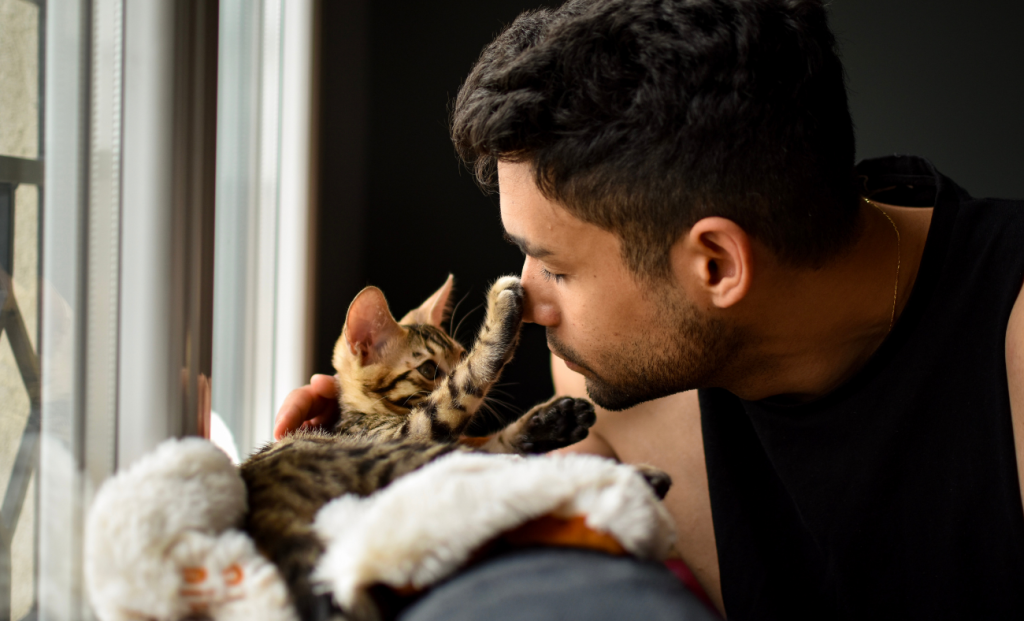
Every cat deserves this fundamental security. The safety to choose social interaction based on personal preference rather than anxiety about environmental threats and family interaction vulnerability.
When withdrawal becomes your cat’s primary stress management strategy, addressing underlying environmental security issues creates genuine, lasting solutions. Solutions that support both emotional well-being and family relationship health throughout their lives.
Your invisible cat isn’t choosing solitude. They’re choosing safety in an environment that feels overwhelming to their nervous system.
Change the environment systematically. Watch them gradually rediscover the joy of secure family life.
Ready to help your invisible cat rediscover the confidence of family engagement? Download our FREE Cat Stress Assessment Checklist: The Essential 12 Hidden Signals to systematically assess environmental factors affecting your cat’s social comfort and develop a personalized plan for building their family interaction confidence through comprehensive cat stress relief and targeted intervention strategies.
